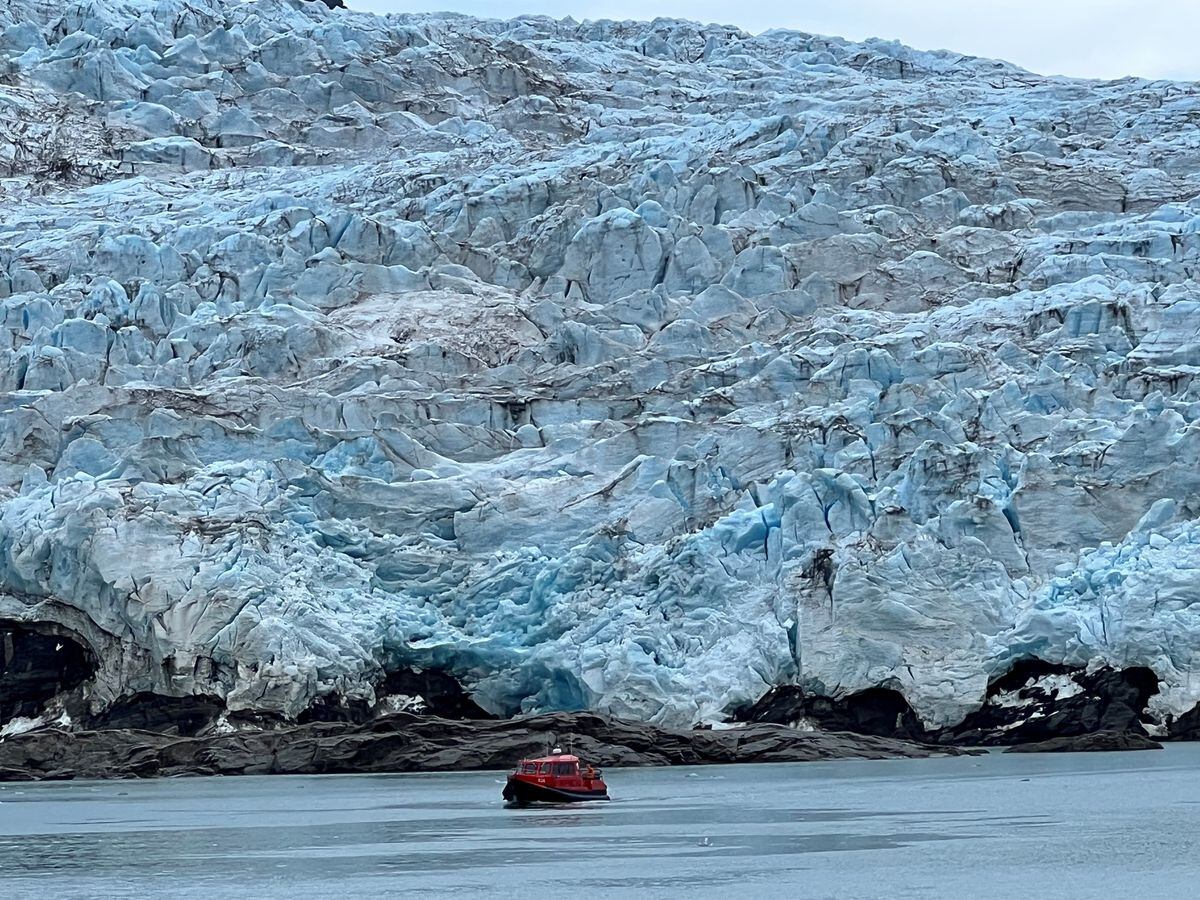AT THE SUMMIT OF MAUNA KEA, Hawaii — 2.5 miles above the Pacific Ocean, Aidan Colton gazed up at the volcano's snow-capped peak and held up a coconut-sized glass flask to collect the combined exhalations from a vast swath of human habitation. , of his cars and his factories that were blowing in his direction.
He had to hold his breath, since even carbon dioxide from his lungs could contaminate the sample.
After a few moments, she breathed again.
The air Colton is collecting on Mauna Kea feeds the world's oldest record containing direct measurements of heat-trapping gases in the atmosphere.
The measurements constitute the
most comprehensive body of firsthand evidence of how Earth's chemistry has changed since the mid-20th century
, upending the world's climate.
These measurements represent the success of a far-reaching scientific undertaking and, late last year, they entered a crisis.
One of the jars NOAA atmospheric technician Aidan Colton uses to collect air samples atop Mauna Kea at the Mauna Loa Observatory in Hawaii. (Erin Schaff/The New York Times)
For six decades, scientists had been taking their air measurements from a set of low buildings atop Mauna Loa, another huge volcano located on the island of Hawaii.
Then, in November,
Mauna Loa erupted for the first time in nearly 40 years
.
There were no injuries, but lava flows up to 30 feet deep downed the observatory's power lines and buried 1 mile of the main road leading up the mountain.
The facilities were paralyzed.
After a trans-oceanic effort and a good dose of luck, scientists at the Mauna Loa observatory resumed their measurements, but for the first time at Mauna Kea, the next closest volcano.
The disruption highlights the careful planning and painstaking
labor required to gather this data, as well as the obstacles, both human and natural, that can interfere
.
He demonstrates how the task of measuring air, which would seem so simple, is not at all.
After Mauna Loa began spewing lava, technicians from the National Oceanic and Atmospheric Administration (NOAA), the entity that manages the observatory, came to set up instruments on Mauna Kea shortly before it a violent winter storm produced hurricane force winds on the summit, which could have delayed the work.
They were able to finish it so quickly because, months before, NOAA had already begun exploration and had set up a backup site there, at a telescope run by the University of Hawaii.
"Of course it's lucky," said Brian A. Vasel, director of observatory operations for NOAA's Global Monitoring Laboratory.
But "of course it's not a coincidence."
The Halemaumau crater of Kilauea, on the Big Island of Hawaii.
Since an eruption in Hawaii halted the carbon dioxide record, scientists have continued their work at the top of a neighboring volcano.
(Erin Schaff/The New York Times)
In the end, the agency went a little over a week without taking measurements.
The Scripps Institution of Oceanography, which had also been monitoring Mauna Loa's atmosphere for decades, began collecting data on Mauna Kea a week after NOAA did.
This institution, which is part of the University of California at San Diego, uses other instruments independent of those of NOAA, but which are kept at the agency's facilities.
Now
NOAA is helicoptering in solar panels and batteries to Mauna Loa
to restore power to the crippled observatory.
The plan is to collect parallel measurements on both volcanoes over a year to compare them and assess whether Mauna Kea, which last erupted 4,600 years ago, could become a long-term backup to Mauna Loa, the world's largest active volcano. .
When the lava cools enough to make a new highway, which may be as early as summer, the agency also plans to begin refurbishment of its archaic Mauna Loa observatory, with redesigned lab space, better internet connectivity, fiber optics and electricity, as well as its first septic system, since the site currently only has one latrine.
“The facilities were outdated,” Vasel noted.
Now the goal is to "build the site that will support the mission of Mauna Loa for the next decade...and decades to come."
At each volcano, Colton fills the glass flasks with long blasts of mountain air, in a ritual that hasn't changed much since Charles David Keeling, a scientist at the Scripps Institution, began sampling the atmosphere on Mauna. Loa in the 1950s. Some of the flasks are even the same as decades ago.
Analog methods help ensure that measurements can be compared over time.
But it's still Colton, an atmospheric technician working at NOAA, who
must figure out how to collect samples from him each week
under the most constant conditions possible
.
Long ago, he figured out where on Mauna Loa he should stand, and at what time of day, to catch the air at the cleanest time.
He hasn't yet figured this out on Mauna Kea, where there are thirteen stargazing stations that deflect the wind and where tourist traffic throws off carbon levels.
Equipment at the Mauna Loa Observatory in Hawaii.
(Erin Schaff/The New York Times)
After it snowed, an area of the western flank of the volcano was no longer accessible.
On another occasion, a snowplow appeared spewing smoke while Colton was collecting the samples.
"Every time something changes, there may be another anomaly, something that may affect the outcome," he explained.
NOAA expects to complete the first stage of its redevelopment at Mauna Loa by fall 2024, Vasel said.
The cost is 5.5 million dollars.
It has been a long battle to raise resources for the Mauna Loa operation.
A few years ago, the road leading to the volcano needed maintenance, explained Darryl Kuniyuki, who manages the station's operations.
The federal government gave them some money, he said, but not enough to pay contractors to repaint the lines.
“I had to get creative and I hired the Boy Scouts
. ”
He and other observatory employees painted almost everything.
The local boys did the rest as part of a project to earn the rank of Eagle.
It's not easy convincing funding agencies to support long-term atmospheric monitoring, said Ralph Keeling, a scientist at the Scripps Institution and son of Charles David Keeling.
“Climate change unfolds decade after decade;
You don't know what's going on unless you look at it decade after decade,” said Ralph Keeling.
"That means having measurements over a much longer time frame than a run-of-the-mill science project requires."
“At a certain point, agencies say,
'Well, why are we funding this?'”
Keeling said.
Today, the island of Hawaii is not the only place where scientists are monitoring global carbon levels.
With newer methods, researchers can calculate emissions from even a separate factory, power plant, and oil field.
As Colton drove down Mauna Kea's gravel road in a truck, he explained that
the observatory's measurements continue to provide an all-important reference for understanding other emissions data
.
They are "the foundations", he asserted, "the fundamental bases to which everyone refers."
c.2023 The New York Times Company




/cloudfront-eu-central-1.images.arcpublishing.com/prisa/CPCAPBNNZFHSDDUPITKV6D3I3A.jpg)




